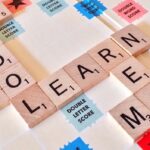As the leaves start to change colors and a crisp breeze fills the air, preschool teachers and parents alike look forward to the autumn season. Fall offers a wonderful opportunity to engage young children in fun and educational activities that foster creativity, curiosity, and a deeper understanding of the world around them. In this comprehensive guide, we’ll explore a variety of fall lesson plans for preschoolers, designed to make learning an enjoyable adventure during this vibrant season.

The Importance of Seasonal Lesson Plans
Before delving into specific fall lesson plans for preschool, it’s important to understand why seasonal lesson planning can be so effective. Seasonal lesson plans allow educators and parents to tap into children’s natural curiosity and connect learning to their everyday experiences. By embracing the seasonal changes, children can gain a better understanding of nature, the environment, and the passage of time.
Moreover, seasonal lesson plans make learning more engaging and memorable. When children can connect their lessons to the world outside their windows, they are more likely to retain and apply the knowledge they gain. The changing seasons provide a built-in framework for organizing activities and creating thematic units, making it easier to plan and execute lessons that captivate young minds.
Fall Lesson Plans for Preschool
1. Leaf Exploration
One of the most iconic elements of fall is the colorful display of falling leaves. A lesson on leaves is a fantastic way to introduce preschoolers to the world of botany, colors, and patterns. Here’s how to go about it:
Materials Needed:
- A variety of fall leaves (oak, maple, etc.)
- Magnifying glasses
- Art supplies like crayons, colored pencils, and paper
- Books about leaves and trees
Activities:
- Start by taking a nature walk with your preschoolers to collect leaves of different
shapes and colors. - Provide magnifying glasses to allow children to examine the leaves closely, discussing the various patterns and textures.
- Encourage them to create leaf rubbings by placing leaves under a sheet of paper and gently coloring over them with crayons.
- Read age-appropriate books about leaves and trees to reinforce their learning.
Learning Objectives:
- Identification of different types of leaves.
- Observation skills and appreciation of nature’s diversity.
- Fine motor skills development through leaf rubbings.
- Vocabulary enrichment through discussions and reading.
2. Pumpkin Investigations
Pumpkins are a quintessential symbol of fall, and exploring them can be a multi-faceted learning experience for preschoolers. This lesson plan can encompass science, math, and art activities.
Materials Needed:
- Pumpkins of various sizes
- Scales for weighing
- Measuring tape
- Carving tools (for pumpkin carving)
- Orange paint and brushes
- Books about pumpkins and their life cycle
Activities:
- Begin with a discussion about pumpkins, their appearance, and where they come from.
- Weigh and measure the pumpkins to introduce basic math concepts like size and weight.
- Carve a pumpkin, discussing its anatomy and parts (stem, pulp, seeds).
- Have a pumpkin painting session where children can express their creativity.
- Read books about the life cycle of a pumpkin, from seed to plant.
Learning Objectives:
- Introduction to basic math concepts such as size and weight.
- Observation and discussion of the parts of a pumpkin.
- Creative expression through pumpkin painting.
- Understanding the life cycle of a pumpkin.
3. Apple Adventures
Fall is also the perfect time to explore apples, from picking them in orchards to turning them into delicious treats. This lesson plan can incorporate science, math, and cooking activities.
Materials Needed:
- Apples of various types (red, green, yellow)
- Scales for weighing
- Apple cutters and corers
- Cinnamon and sugar
- Baking supplies for apple-themed recipes
- Books about apples and apple orchards
Activities:
- Go on an apple-picking field trip to a local orchard.
- Weigh and measure the apples, introducing concepts of weight and size.
- Discuss the parts of an apple and their characteristics.
- Prepare apple-themed recipes like applesauce or apple pie, involving children in measuring and mixing ingredients.
- Read books about apples and the process of apple farming.
Learning Objectives:
- Introduction to math concepts such as size and weight.
- Observation and discussion of the parts of an apple.
- Hands-on experience with food preparation and cooking.
- Understanding the process of growing and harvesting apples.
4. Scarecrow Stories
Fall isn’t complete without the friendly faces of scarecrows adorning fields and gardens. Scarecrow-themed lessons can incorporate literacy, art, and even a bit of history.
Materials Needed:
- Art supplies like paper, markers, and glue
- Old clothes or fabric scraps
- Straw or hay
- Scarecrow-themed storybooks
Activities:
- Start with a discussion about scarecrows and their role in protecting crops.
- Encourage children to create their own scarecrow art by cutting and pasting paper clothing and drawing a scarecrow face.
- If possible, involve children in a simple scarecrow-building activity using old clothes and straw (with adult supervision).
- Read books about scarecrows and their history in agriculture.
Learning Objectives:
- Creative expression through art.
- Understanding the role of scarecrows in farming.
- Fine motor skills development through cutting and pasting.
- Introduction to a bit of agricultural history.
5. Fall Nature Collages
Preschoolers love to explore and collect items from nature, and fall offers a treasure trove of interesting materials. A nature collage project is a wonderful way to incorporate art and science into your fall curriculum.
Materials Needed:
- Assorted natural items like leaves, acorns, twigs, and pinecones
- Glue
- Paper or cardboard
- Paint and brushes (optional)
Activities:
- Take children on a nature walk to collect a variety of fall items from the outdoors.
- Encourage them to sort and classify the items by type, color, or size.
- Provide materials for creating nature collages on paper or cardboard. They can arrange and glue their finds in any creative way they like.
- For an extra touch, you can introduce a painting element by allowing them to paint over their collage in fall-themed colors.
- Discuss the items collected and their significance in the fall season.
Learning Objectives:
- Exploration of the natural world and its components.
- Sorting and classifying skills.
- Creative expression through collage and painting.
- Vocabulary enrichment and discussion of seasonal changes.
6. Harvest Festival
Celebrate the bountiful harvest of fall with a mini-harvest festival at your preschool. This event can bring together various lessons, including math, science, and social studies, while fostering a sense of community.
Materials Needed:
- Harvest-themed decorations
- A variety of fruits and vegetables
- Baskets or crates
- Arts and crafts supplies for making decorations
- Instruments for a mini-harvest parade
- Autumn-themed storybooks
Activities:
- Decorate your preschool with fall-themed decorations like scarecrows, pumpkins, and colorful leaves.
- Organize a mini-harvest parade where children can use instruments and march with baskets of fruits and vegetables.
- Set up a “farmers market” display with the harvested items, allowing children to weigh and sell them to one another (using play money or real coins).
- Have a craft station for making decorations like paper plate scarecrows.
- Read storybooks about harvest traditions and fall celebrations.
Learning Objectives:
- Introduction to basic math concepts related to buying and selling.
- Social studies understanding of harvest traditions and celebrations.
- Fine motor skills development through crafting.
- Celebrating the sense of community and the fruits of hard work.
Conclusion
Fall is a season full of opportunities for preschool educators and parents to engage young learners in exciting, hands-on lessons that foster curiosity and exploration. By incorporating nature, seasonal themes, and the bountiful harvest into lesson plans, children can develop a deeper understanding of the world around them while having fun.
These fall lesson plans for preschool provide a comprehensive and diverse approach to seasonal learning, ensuring that children explore various subjects and develop essential skills in the process. Moreover, these activities lay a strong foundation for lifelong learning and a deep appreciation for the changing seasons.
So, don’t hesitate to embrace the magic of fall and incorporate these engaging lesson plans into your preschool curriculum. Your little ones will undoubtedly enjoy their autumn adventure in learning.




